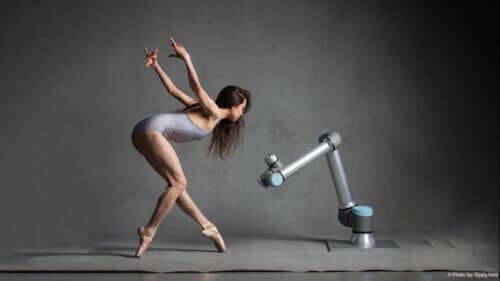"My partner may not look impressive, but he has a lot of potential as a dancer," she says. Barishnibot's programming, which on normal days, he and his friends, mostly perform monotonous and boring jobs on assembly lines, she says, was like playing a complex puzzle

When the world of culture went into lockdown last March, quite a few dancers raised their hands and hung up their dancing shoes. But, that's not what Merit Moore did, who danced with the Norwegian National Ballet, the Boston Ballet and the English National Ballet, who also has a doctorate in quantum physics from the University of Oxford. Her solution to social distancing was simple in its genius: using cobots (collaborative robots) as dance partners - a sort of artistic/technological experiment. The idea came after she completed a 6-week training at Harvard ArtLab that dealt with the use of robots in modern dance. "I didn't imagine that a few days later I would find myself in a closed situation where my only potential partner would be a robot"?
Dr. Ballerina contacted the collaborative robot manufacturer Universal Robots and the delivery of the cobot, named "Barishnibot" (after the famous dancer Barishnikov), arrived directly at her besieged apartment in London. Since and throughout the epidemic, Dr. Merritt and her cobot have become a hit on Instagram and Tiktok, having already passed the 15 million view mark. The move was so successful that the two were invited to a two-month exhibition at the London "Koppel" gallery.
"My partner may not look impressive, but he has a lot of potential as a dancer," she says. Barishnibot's programming, which on normal days, he and his friends, mainly perform monotonous and boring jobs on production lines (which save a lot of back pain and not a few human workers), she says was like playing a complex puzzle. "The challenge was how to make him move like someone who has a head, hands, legs and body...". She says that the first programming, a 25-second Tiktok dance, took her 5 hours of work, but, as she progressed, the times got shorter and shorter and today the dances are already highly choreographed. And what is Barishnibot's greatest strength, in her opinion: he never goes out for coffee breaks or complains about the many hours of training,' she says and promises that this chapter in her life is only part of the breaking down of the barriers between art and science that she plans to continue.
Video:
More of the topic in Hayadan:
